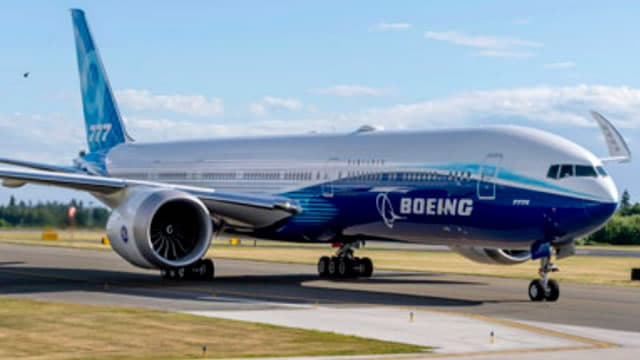Explainer: What are the fuel switches at the centre of the Air India crash probe?

Summary
The preliminary report on the Air India crash reveals the Boeing 787's engine fuel control switches were briefly turned off post-takeoff, starving engines of fuel. This critical finding shifts the probe's focus to operational anomalies and their implications for aviation safety. The incident puts Boeing (BA) under scrutiny regarding cockpit design and training. Investors should monitor the investigation's outcome, as human error versus systemic flaw will dictate long-term stock impact. The probe aims to prevent future tragedies by understanding the 'why' behind the event.
Explainer: What are the Fuel Switches at the Centre of the Air India Crash Probe?
The preliminary report from investigators probing the Air India crash that tragically killed 260 people has brought a critical detail to light: seconds after takeoff, the Boeing 787 plane's engine fuel control switches were briefly switched off, effectively starving the engines of fuel. This revelation has immediately shifted the focus of the investigation towards understanding the precise circumstances surrounding this critical operational anomaly and its implications for aviation safety.
The Critical Role of Engine Fuel Control Switches
Engine fuel control switches are fundamental components in an aircraft's cockpit, designed to manage the flow of fuel to the engines. Typically, these switches are in the 'on' position during all phases of flight, from engine start-up through takeoff, cruise, and landing. Their primary function is to allow or cut off the fuel supply, a critical safety measure in emergencies such as an engine fire or uncontained engine failure. However, an inadvertent or erroneous manipulation of these switches during a critical phase like takeoff can have catastrophic consequences, as appears to be the case in the Air India incident.
In modern aircraft like the Boeing 787 Dreamliner, these systems are highly sophisticated, often incorporating safeguards and redundancies to prevent accidental activation. The fact that the switches were reportedly turned off, even briefly, raises serious questions about cockpit procedures, crew training, potential system malfunctions, or even external factors that might have led to such an action. Investigators will be meticulously examining cockpit voice recorder (CVR) data, flight data recorder (FDR) information, and interviewing ground crew and air traffic control personnel to reconstruct the exact sequence of events.
Immediate Impact and Broader Implications for Boeing (BA)
The immediate impact of this preliminary finding is significant, particularly for Boeing (BA), the manufacturer of the 787 Dreamliner. While the report does not definitively assign blame, any operational anomaly involving critical aircraft systems inevitably draws scrutiny to the aircraft's design, human-machine interface, and the training protocols associated with its operation. Boeing's reputation, already under pressure from past incidents, could face renewed challenges depending on the final conclusions of the investigation.
For Boeing, this incident underscores the paramount importance of robust safety features and intuitive cockpit design. The company will likely be cooperating closely with investigators, providing technical expertise and data. The outcome of this probe could lead to recommendations for changes in pilot training, cockpit procedures, or even minor design modifications to prevent similar occurrences in the future. The market's reaction to such news is often swift, with investor confidence potentially wavering until clarity emerges regarding the root cause and any necessary corrective actions.
Market Context and Investment Insights
From a market perspective, incidents like the Air India crash, especially when preliminary findings point to operational issues, can introduce volatility for aerospace manufacturers like Boeing. Investors typically react to news that could impact future aircraft orders, production schedules, or lead to increased regulatory oversight. While a single incident may not derail long-term prospects, a pattern of safety concerns or significant design flaws could have a more lasting negative effect.
For investors holding or considering Boeing (BA) stock, this development warrants careful monitoring. The initial negative sentiment (-0.584) reflects the immediate concern. However, it's crucial to differentiate between a systemic design flaw and an operational error. If the investigation concludes that the incident was primarily due to human error or procedural deviation, the long-term impact on Boeing's stock might be less severe than if a fundamental design flaw in the 787's fuel control system were identified. Investors should look for official statements from Boeing, updates from the investigative body, and any potential regulatory actions. Diversification within the aerospace sector or across different industries remains a prudent strategy to mitigate risks associated with company-specific events.
The Path Forward for the Investigation
The investigation will now delve deeper into several key areas: the training and experience of the flight crew, the maintenance history of the aircraft, the functionality of the fuel control switches and associated systems, and any environmental factors that might have contributed to the incident. The goal is not just to determine what happened, but why it happened, to prevent future tragedies. The findings will be critical for the global aviation industry, potentially leading to revised safety protocols and enhanced pilot training standards worldwide.